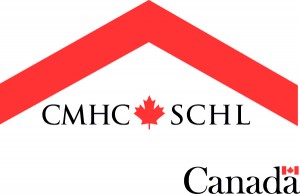 The retail mortgage transaction as you and I know it is just a tiny part of the trillion dollar Canadian mortgage industry. While we are focused on the everyday mechanics of mortgage financing i.e. down payment, proof of employment, bi-weekly vs. monthly payments etc the main show is happening behind the scenes on your mortgage lender’s balance sheet. Large portfolios of mortgages are being bundled, yours just a blip on the balance sheet, and traded everyday around the world. This type of banking activity has its benefits that trickle down to consumers allowing for cheaper mortgage money and easier approval but that is a set to change. I’m starting to see the effects already and so will many mortgage borrowers in Canada in the years to come but before I share my recent observations a little lesson in today’s Canadian mortgage market.
The retail mortgage transaction as you and I know it is just a tiny part of the trillion dollar Canadian mortgage industry. While we are focused on the everyday mechanics of mortgage financing i.e. down payment, proof of employment, bi-weekly vs. monthly payments etc the main show is happening behind the scenes on your mortgage lender’s balance sheet. Large portfolios of mortgages are being bundled, yours just a blip on the balance sheet, and traded everyday around the world. This type of banking activity has its benefits that trickle down to consumers allowing for cheaper mortgage money and easier approval but that is a set to change. I’m starting to see the effects already and so will many mortgage borrowers in Canada in the years to come but before I share my recent observations a little lesson in today’s Canadian mortgage market.
A Lesson In The Canadian Mortgage Market…
You may be surprised to find out that mortgage default insurance (What is CMHC insurance?) is actually purchased on the vast majority of mortgages even where the down payment is more than the 20% minimum requirement. By law, consumers must buy mortgage default insurance if they have less than a 20% down payment on a home and are borrowing from a federally regulated financial institution. But CMHC and other mortgage insurers are insuring lower-ratio mortgages through what is called “portfolio” or “bulk insurance.”
In a nutshell having mortgages bulk insured allows the lender to sell their securitized insured mortgage portfolio in a secondary market. This benefits the mortgage lender by creating more money or liquidity to be able to lend out money again. It also benefits borrowers because in part it has helped keep mortgage rates low and also made qualification a little bit easier.
But things are changing…
 CMHC is a crown corporation established during the post WWII era whose mandate has always been to help promote and facilitate home ownership in Canada. Three years ago parliament extended the insurance limit of CMHC from $450 billion to $600 billion dollars. In 3 short years CMHC has exceeded the limit fueled primarily by Canadian lender’s using the available insurance capacity to bulk insure their entire portfolio. This raises all kinds of economic and political flags as ultimately Canadian taxpayers are insuring mortgages to protect banks and allow them to have more marketable portfolios to sell. If you are technically inclined and want more info, check out this Bloomberg article from last week Canada Bans Insured Mortgages From Covered Bond Collateral.
CMHC is a crown corporation established during the post WWII era whose mandate has always been to help promote and facilitate home ownership in Canada. Three years ago parliament extended the insurance limit of CMHC from $450 billion to $600 billion dollars. In 3 short years CMHC has exceeded the limit fueled primarily by Canadian lender’s using the available insurance capacity to bulk insure their entire portfolio. This raises all kinds of economic and political flags as ultimately Canadian taxpayers are insuring mortgages to protect banks and allow them to have more marketable portfolios to sell. If you are technically inclined and want more info, check out this Bloomberg article from last week Canada Bans Insured Mortgages From Covered Bond Collateral.
If you just want to borrow some money to buy a condo or that bungalow down the street, how does this affect you?
Here are 4 observations I’ve made over the past month that I can directly relate to CMHC reaching its $600 billion dollar limit:
- Mortgage qualification is becoming much more difficult. With CMHC reaching it’s limit they are very choosy about who they will insure. Even though a borrower can meet all of the minimum requirements they are not issuing approvals unless the borrower(s) shows strength. There are two other mortgage insurers in Canada, Genworth and Canada Guarantee, who are taking on more business however they are also being choosy about who they insure. Mortgages that wouldn’t have been an issue to approve 6 months ago are becoming impossible to place.
- Beware if you are purchasing with 5% down. If you are buying with 5% down payment your application has to be extra clean and tidy. Where exceptions could be made in the past today there is no mood for leniency. Be sure to get pre-approved if you are planning on buying with 5% down.
- Market values are being challenged. Even though you might buy a house for $X doesn’t mean that the mortgage insurer will agree with the value. Recently I’ve seen mortgage insurers disagree with purchase prices. This is the effect of increased government oversight and the governments desire to slow down the hot real estate market, especially here in Toronto.
- Smaller down payments lead to lower rates. Long ago purchasers who could come up with larger down payments were rewarded with lower interest rates. That isn’t the case anymore. Since lenders can still insure their mortgages where down payment is less than 20% that makes the cost of borrowing less which translates into lower rates. Borrowers who show strength and can purchase with 20% down payment are being penalized by having to pay higher rates. At the time of writing there is anywhere between a +0.10% to +0.20% difference between conventional and high ratio mortgage interest rates.
2012 will prove to be a catalyst year for mortgages in Canada and will bring long lasting changes. Although the immediate effects can be perceived as negative for mortgage borrowers (i.e. tightened lending criteria and higher rates for some borrowers) in the long run these changes will help to stabilize our incredibly resilient real estate market and ease the strain on a society addicted to credit.
If you are thinking of buying and want to be pre-approved or have a mortgage and need to refinance or renew I’d love to talk to you. Contact me here or book a call into my calendar below.